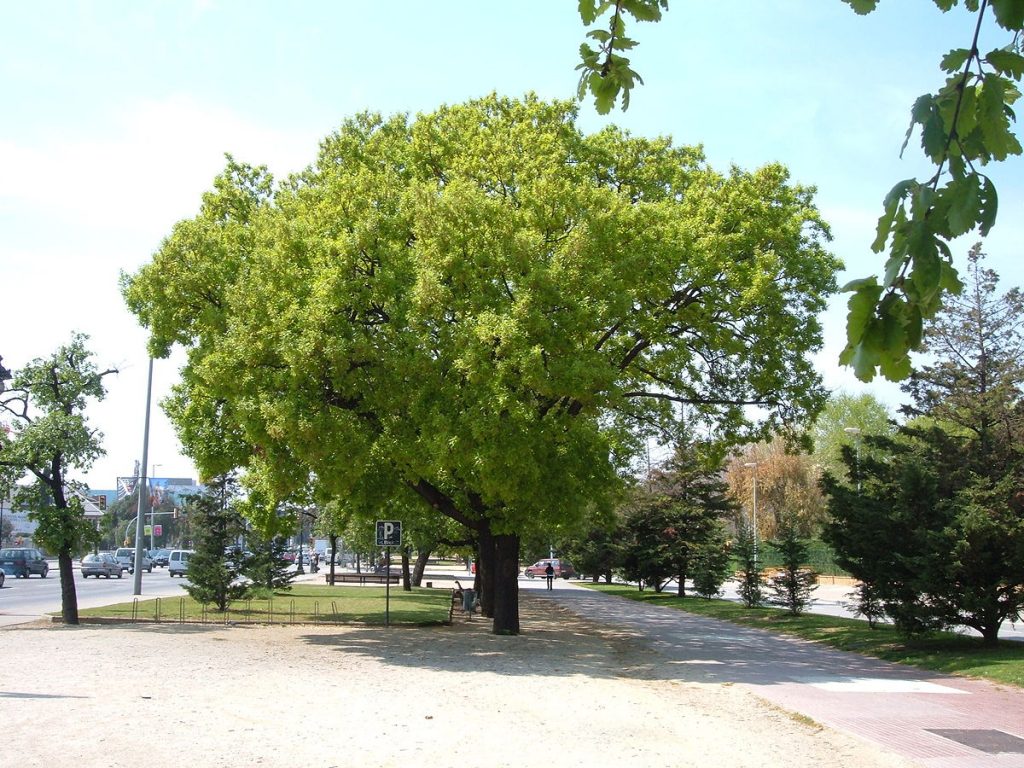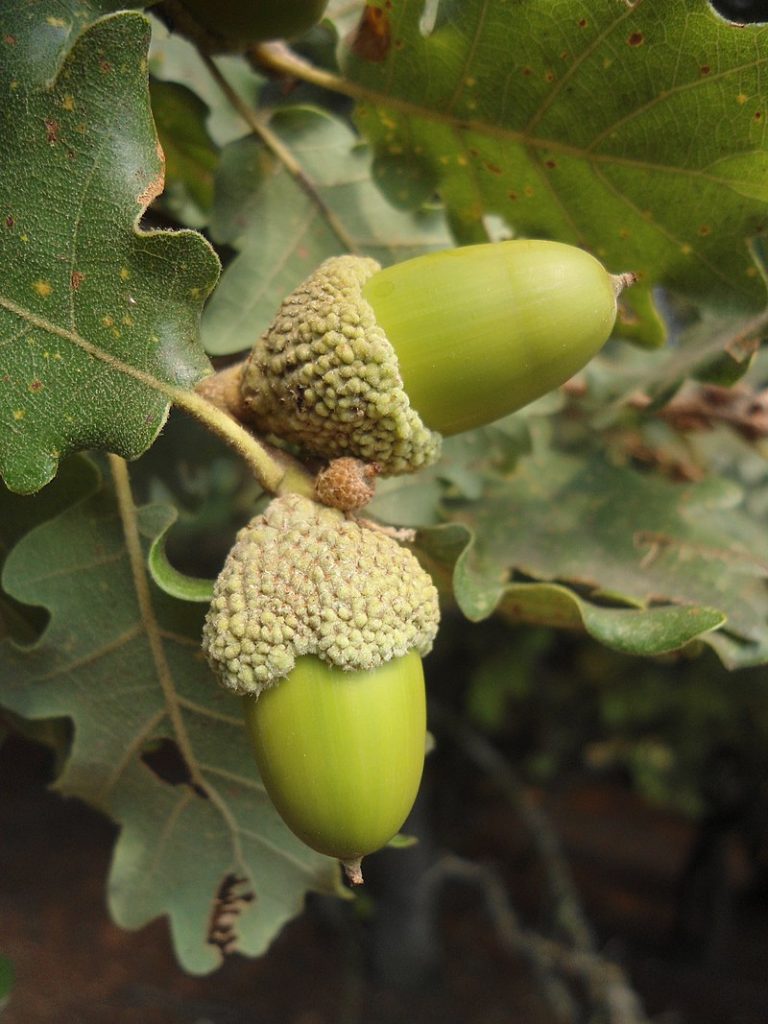
Native to dry, lime-rich soils of southern Europe, parts of central Europe, and southwest Asia, this deciduous tree thrives in submediterranean climates where summers are dry and hot and the winters are cool with little rain. It is a member of the beech family, Fagaceae, that also includes chestnut. The tree grows up to 66′ tall and has a very broad and irregular crown at maturity. The trunks may be over 6′ across, and have rough, flaky, light gray bark that may develop deep furrows with age. The branches are usually crooked. The light purple or whitish twigs are covered with matted woolly hairs and the blunt buds are light brown. As the leaves unfold they are whitish to pink but become leathery, dark green above, light green below, and covered with soft hairs. Clustered at the end of the twigs, the leaves are egg-shaped to elliptic , up to 5” long, and are usually divided into 3-7 pairs of lobes with sublobes. Both the base and tip of the leaves are rounded rather than sharp. The leaves remain green on the tree to early winter and then turn brown or russet before falling. Inconspicuous, yellowish-green male and female flowers appear in spring on the same tree. The male flowers are in long pendent hairy catkins while the female flowers are in clusters and give rise to groups of 2-5 light gray to almost white acorns that are pointed, ovoid, up to 3/4″ long, and are covered with woolly hairs. From ancient times to the present day, the acorns have been used for livestock fodder, including pigs in Italy, and are a preferred choice for the growing of truffles. The genus name, Quercus, is the ancient Latin name for the plant. The specific epithet, pubescens, is the Latin word meaning hairy and refers to the hairs on the various plant parts. Photo Credit Arturo Reina Sánchez Wikipedia Commons

Type: Deciduous tree
Outstanding Feature: Shade tree; possibility of truffle culture
Form: Broad crown
Growth Rate: Medium
Bloom: Inconspicuous, yellowish-green male and female flowers on the same tree in spring
Size: 40-66′ H x 20-40′ W
Light: Full sun but tolerates some shade
Soil: Rich, moist, well-drained, alkaline
Hardiness: Zones 5-8
Care: Low maintenance
Pests and Diseases: Generally healthy but susceptible to anthracnose, cankers, chestnut blight, leaf spots, oak leaf blister, oak wilt, powdery mildew, and shoestring root rot; borers, caterpillars, galls, leaf miner, nut weevils, oak lace bugs, oak skeletonizer, and scale.
Propagation: Seed (can not dry out); resents tranplanting because of taproot
Outstanding Selections:
‘Miggaziana’
‘Aydin’
‘Dissecta’
Photo Credit: Photo Credit: Dimitar Naydenov, Wikimedia Commons